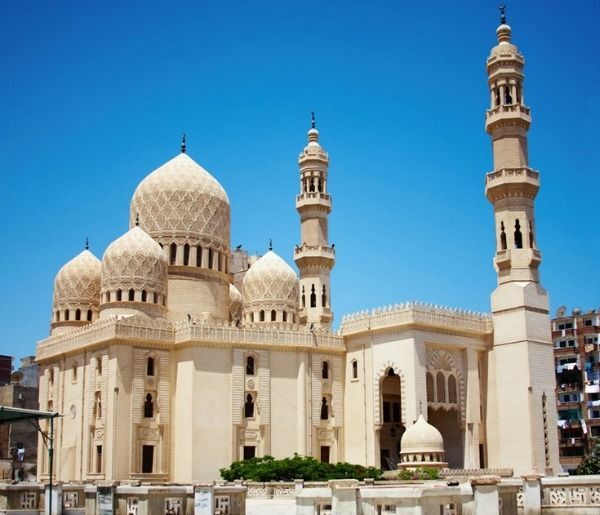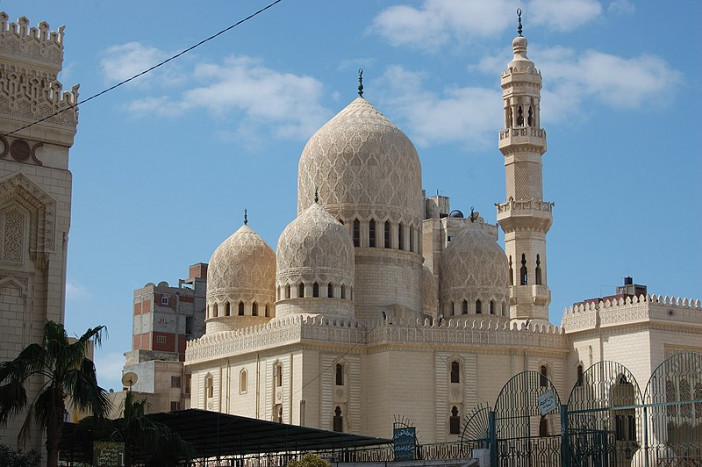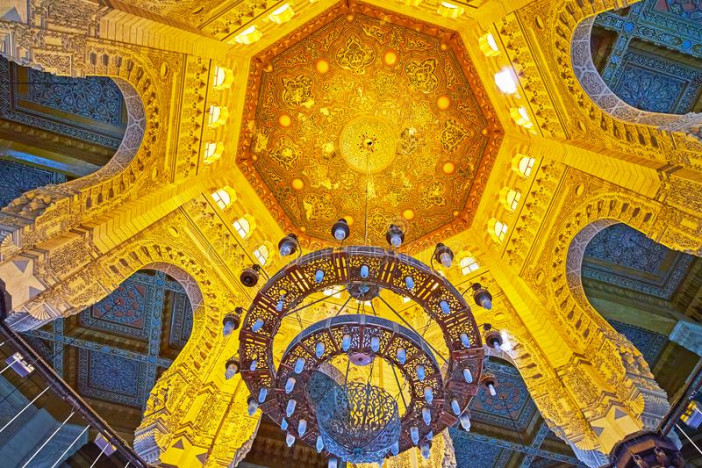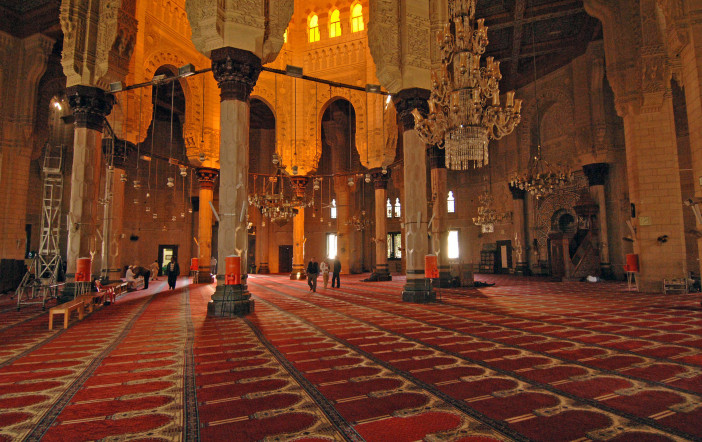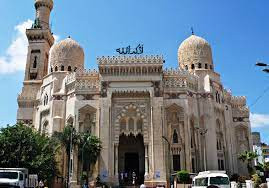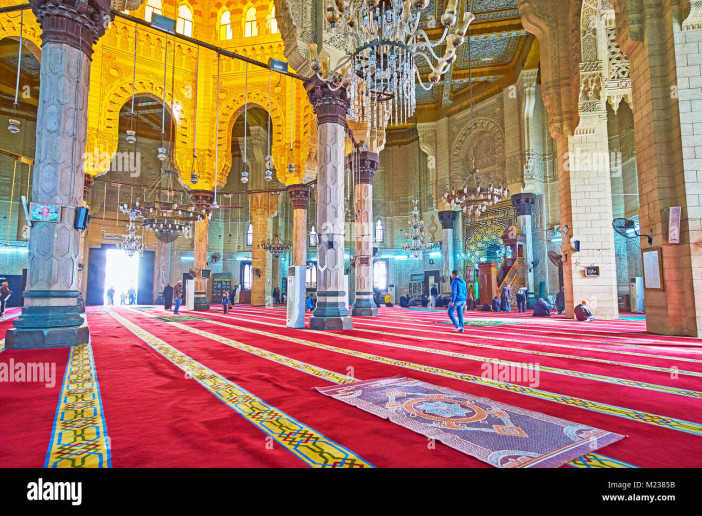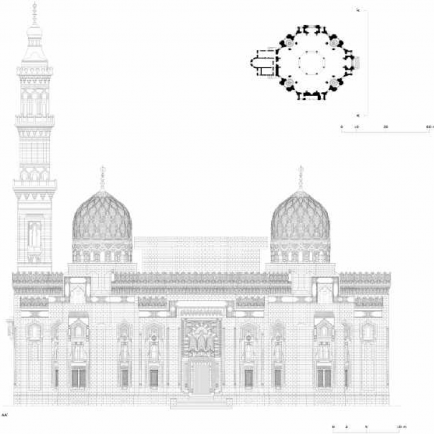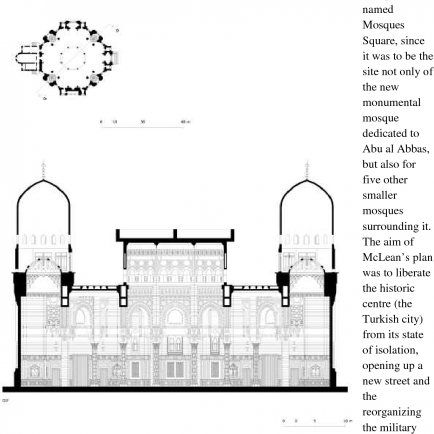El-Mursi Abul-Abbas Mosque
History
It was built in 706 of the Hegira by Sheikh Zinedin Ibn Kattan (Grand patron of the traders of Alexandria, on the tomb of Ahmad Abu Al Abbas Al Mursi (disciple of the Grand Sheikh Abu Al Hassan Shadili, Sufi saint of the 13th century)
In 1477, the mosque was restored by Prince Kachmaj Isshaki from the time of King al Ashraf Qaitbay. In 1775, the Sheikh abu el Hassan Ali Ibn Ali al Maghribi restored again this mosque which was beginning to decay.
Urban and Architectural
In 1934, the Abu Al-Abbas Al-Morsi Mosque was given the first major architectural breakthrough.King Fuad I ordered the development of a field for mosques with a capacity of about 3,200 square meters, only if it includes the Imam Al-Busiri Mosque and Sheikh Yaqut Al-Arsh, and within the center of them are the Abu Al-Abbas Al-Morsi Mosque, and this project is implemented by an architect An Italian called "Mario Rossi", a young man came to Egypt in his mid-twenties of his age, and he was working within the Egyptian Ministry of Works and supervising the royal palaces.
Description
Al-Morsi Abu Al-Abbas Mosque, although it's an octagonal shape, but the patron is intended to be regular in shape from the within, where the length of every of the ribs reaches 22 meters, it's distinguished by the colour of the cream and therefore the inscriptions and decoration that cover the substitute stones from all directions from the skin in equal proportions. Entering from the northern or eastern entrance, we are going to find that the decorations surround all the inside corners furthermore, as they cover the white marble floors, walls with an exquisite mixture between artificial stone from the highest, and from the underside covered with mosaic, with a height of 5 meters, and at the highest of the roof of the mosque, and at a height of 17 meters We see Arab inscriptions, arabesques and mosaics, mashrabiyas, and also the vents that decorate the mosque from all directions.
References
https://fr.wikipedia.org/wiki/Mosqu%C3%A9e_Abu_el-Abbas_el-Mursi
https://egypt.travel/en/attractions/abu-al-abbas-al-mursi-mosque
Details
Location
Qesm Al Gomrok, Alexandria Governorate , Égypte
Worshippers
1600
Owners
Cheikh Zinedin Ibn Kattan
Year of Build
706
Area
3200
Drawings
Map
History
It was built in 706 of the Hegira by Sheikh Zinedin Ibn Kattan (Grand patron of the traders of Alexandria, on the tomb of Ahmad Abu Al Abbas Al Mursi (disciple of the Grand Sheikh Abu Al Hassan Shadili, Sufi saint of the 13th century)
In 1477, the mosque was restored by Prince Kachmaj Isshaki from the time of King al Ashraf Qaitbay. In 1775, the Sheikh abu el Hassan Ali Ibn Ali al Maghribi restored again this mosque which was beginning to decay.
Urban and Architectural
In 1934, the Abu Al-Abbas Al-Morsi Mosque was given the first major architectural breakthrough.King Fuad I ordered the development of a field for mosques with a capacity of about 3,200 square meters, only if it includes the Imam Al-Busiri Mosque and Sheikh Yaqut Al-Arsh, and within the center of them are the Abu Al-Abbas Al-Morsi Mosque, and this project is implemented by an architect An Italian called "Mario Rossi", a young man came to Egypt in his mid-twenties of his age, and he was working within the Egyptian Ministry of Works and supervising the royal palaces.
Description
Al-Morsi Abu Al-Abbas Mosque, although it's an octagonal shape, but the patron is intended to be regular in shape from the within, where the length of every of the ribs reaches 22 meters, it's distinguished by the colour of the cream and therefore the inscriptions and decoration that cover the substitute stones from all directions from the skin in equal proportions. Entering from the northern or eastern entrance, we are going to find that the decorations surround all the inside corners furthermore, as they cover the white marble floors, walls with an exquisite mixture between artificial stone from the highest, and from the underside covered with mosaic, with a height of 5 meters, and at the highest of the roof of the mosque, and at a height of 17 meters We see Arab inscriptions, arabesques and mosaics, mashrabiyas, and also the vents that decorate the mosque from all directions.


